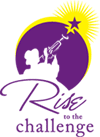Traditional New Orleans Brass Band parades and Jazz funerals consist of two elements, a Main Line and a Second Line.
The Main Line is the "main section or the members of the actual club, that has the permit to parade.” The parades consist of a larger element of fans and the curious following that section of members and musicians...
Those fans, admirers, and the curious are the "Second Line" or part two of the planned street parade. These parades have come to be called "Second Lines", the sponsoring element is the "Main Line" and it is usually a "Social Aid & Pleasure Club" of the neighborhood in which they are parading. These parades very seldom take up routes on heavily traffic laden thoroughfares in the city. Most are held in the back areas, visiting the stops that help the clubs to continue the tradition.
The Social Aide & Pleasure Club tradition is a mixture of African traditions that came together to form one of the most unique forms of celebration in the United States. The tradition's history dates back to the late 19th century in the African American community in New Orleans. The New Orleans Freedmen’s Aid Association, was founded after the Civil War in 1865. This organization’s goal was to provide loans, assistance and legal counsel, and a means of education to the newly freed slaves. The New Orleans Freedmen's Aid Association was the first form of "insurance", to ever exist in the African American communities. They paid funeral costs, when possible, and arranged for Jazz funerals. This function is where the clubs and groups that followed derive their core name, "social aid".
After the Civil War, it was much easier to get musical instruments, so newly freed African Americans, began to form marching bands that consisted of only brass instruments with the lone exception of a bass and tom-tom drums. In the late 1890's and the early 1900's these "Brass bands" began to be asked to perform at Jazz funerals. Jazz funerals were at the heart of an early African slave religious practice, of celebrating of the life of a deceased person.
When the church's funeral service was over, and the procession began the movement from the church to the cemetery, the band would play slow, sad, funeral hymns, known as a "dirge". Led by a "Grand Marshal", the band and mourners would move to the burial site, with the band playing a dirge to signal the struggles, the hardships, the ups and downs of life.
On the way back, the music became more joyful. The band played high-spirited tunes such as "Didn't He Ramble," and "Li'l Liza Jane", among other tunes. This was to signal the dismissal and interment of the physical body and the joyous event of the release of the soul to heaven. Relatives, friends, and acquaintances would become the Second Line and dance with wild abandon. The Second Line, usually sporting umbrellas and handkerchiefs, has become a traditional part of Jazz funerals.
From The Mardi Gras Digest; http://www.mardigrasdigest.com/Sec_2ndline/2ndline_history.htm
Check out this site from The Gumbo Pages for photographs of the Jazz Funeral for Anthony "Tuba Fats" Lacen with pictures of the Tremè Brass Band and a traditional Second Line.
12 January 2007
What's a Second Line?
Posted by
Vicenç Feliú
at
2:15 PM
![]()
Labels: Jazz, New Orleans, Second Line
Subscribe to:
Post Comments (Atom)



No comments:
Post a Comment